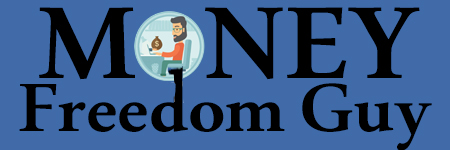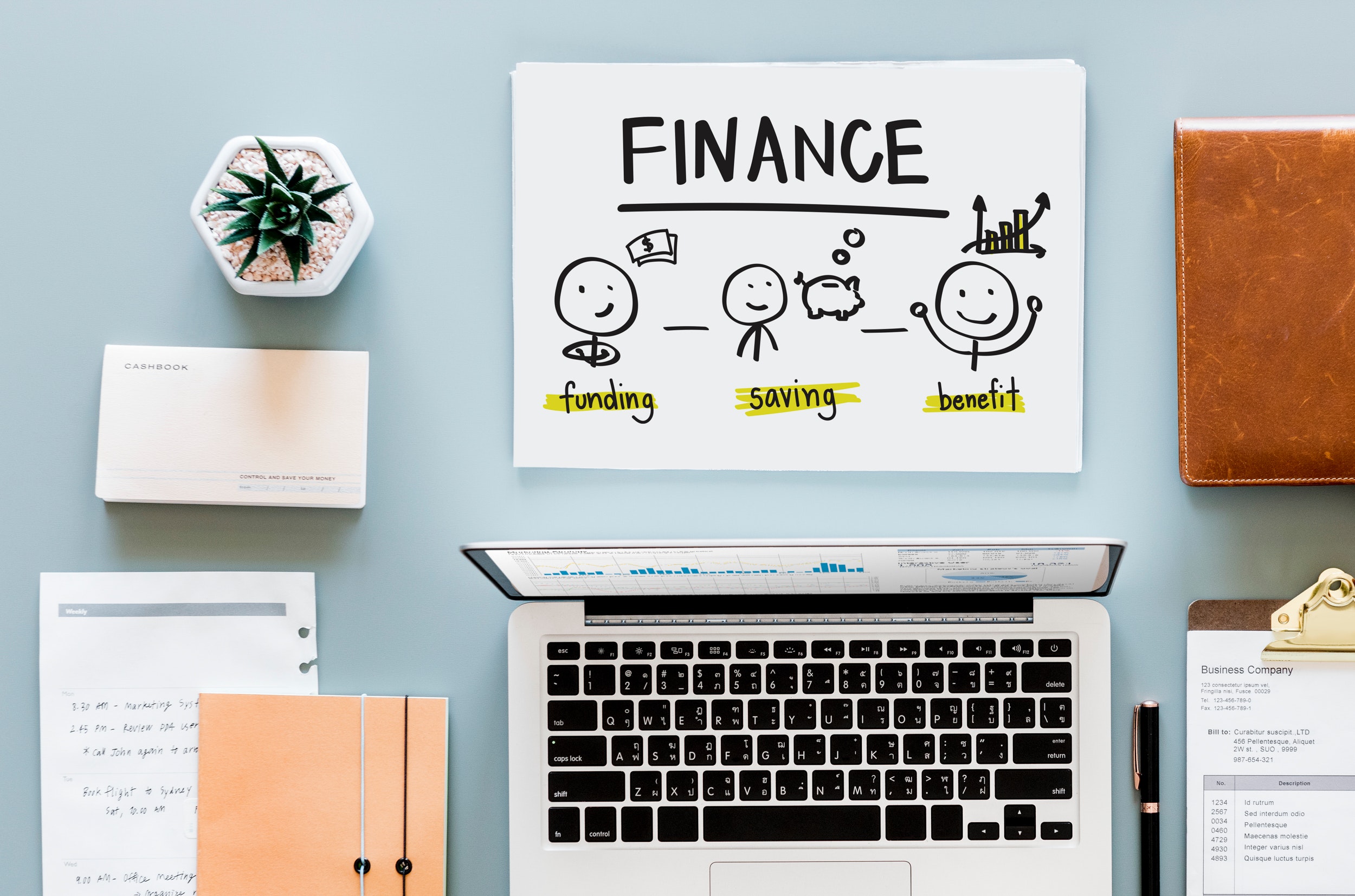
The best way to achieve financial freedom is to create an emergency fund because having this money just sitting in your bank will give you unparalleled peace of mind,
Only 40% of Americans have enough in savings to cover an unexpected emergency. That’s 4 out of 10 Americans with an emergency fund. Put it another way, 60%, or 6 out of 10 Americans, have less than $500 saved in the bank to cover an emergency.
That’s according to an article I read on CNBC and CNN Money. The stats have remained consistent from 2017 to 2018. They will likely stay the same for a while.
What Is Financial Freedom?
When I started on my financial journey, I wanted financial freedom. But what does that mean, exactly? For me, it was never having to work another day in my life because my passive revenue streams will cover all my expenses. Your definition may vary.
The sad thing was it took me ten long years before I ever took action. I realized by the tenth years of inaction that I was setting too high a goal. I needed to break down this goal into something more manageable. So I decided the path to financial freedom would be to have enough money saved up in the bank to cover three months’ worth of expenses. In other words, I started small and created an emergency fund.
I got into the habit of saving and watching my bank account grow. Eventually, I had enough for six months’ worth of expenses, then over a year. But the growth didn’t happen with my government job, which paid a low salary. This grow was explosive when I left government service and joined the private industry, where salaries are much higher. This was another lesson for me. If you want more money, you have to make more money. Saving is just one part of the equation.
But the time I spent growing this cash reserve was a stressful time. The company I worked for go through yearly reorgs. This is just a nice way of saying the CEO lays off employees numbering in the high double-digits every year. While I have managed to survive for the past few years that I’ve worked there, each round of layoffs sent my stress levels through the roof.
That was before I had a year’s worth of money sitting in the bank to cover my expenses and give me breathing room to look for a new job. During this time, I went through nine months of chronic pain in my right shoulder. One day, I checked my bank account and realized I had enough saved up to cover a year. Within several weeks, the pain went away.
If you have money myths, I invite you to get your free copy of 7 Money Myths Preventing You From a Positive Cashflow.
That’s what creating an emergency fund, a cash reserve, “fuck you” money, or whatever you want to call it does for you. It gives you peace of mind, tranquility, and most of all freedom. You don’t have to do something unreasonable that your manager asks of you because you have the freedom to walk away at any given moment. It also means being able to take more than the two weeks’ worth of vacation that comes with most jobs. While vacation time means drawing from your cash reserves, it also means you have something few people achieve: Financial freedom.
Having a cash reserve also gives you time to look for the job you truly want. Now that’s freedom.
Create the Emergency Fund With the 50/20/30
You might have heard of the 50/30/20 Rule to financing. The rule states that no more than 50% of your monthly income after taxes should go towards mandatory and obligatory expenses. These include:
- Rent/mortgage
- Medical bills
- Childcare
- Prescription medication
- Groceries
- Utility bills
- Medical, accidental death and dismemberment, life and umbrella insurances
The next 20% after taxes is what you should ideally be investing. Here are some ideas:
- Stocks
- Real estate
- Your business or other people’s business
- Cash reserve/emergency fund
- Education towards building a business
Note that the 20% is pure financing. Of course, if you think taking a class will bring upon a return-on-investment towards your business, you can put education in this category, too.

The remaining 30% after taxes goes towards discretionary funding. These includes things such as
- Car payments
- Car insurance
- Gas
- Credit card balances
- Coffee every day from your favorite shop
- New toys (smartphones, computers, electronics, and other gizmos)
- A class you want to take
- Entertainment (movies, Netflix, dance classes)
- Hobby-related activities
- Satellite TV
- Internet
- Cell phone service
- Eating out at restaurants
- Taking vacations
- Gym memberships
Of course, you might wonder why car payments, insurance, and gas don’t fall under the 50% category, especially if you have to drive to get to work. Likewise, the Internet and cellular service may be required parts of your job. If that’s the case, then feel free to re-categorize as you see fit. This is the beauty of personal finance. You make it personal to you.
The 50/20/30 Rule Provides Guidance
You’ll also notice that the percentages appear in non-descending order, and the reason is one of priority. It’s important to first take care of your must-haves (50%), like rent and medical bills. After all, you can’t live without these things.
Next, with what you have left over get into the habit of saving and investing. This means you should save 20% of your paycheck to put towards your emergency fund and investments.
Then and only then do you worry about paying off your debts or buying that new entertainment system (30%).
The 50/20/30 Rule causes you prioritize your spending. It helps you decide what’s important so that you may direct your time and resources towards them.
Of course, over time you to live within your means. You learn to stop buying a $5 cup of coffee from Starbucks every day. To save over $300 a month, you learn to bring your own lunch in to work instead of eating out every day.
Over time, one day you’ll look back and realized you have created your emergency fund.
So If You Really Want Financial Freedom…
How do you eat an elephant?
One bite at a time.
It’s the same when you want to achieve financial freedom. You have to break up that lofty goal of never having to work again a single day in your life, free to do with your time as you please (that’s my definition of financial freedom…your’s will vary).
You create an emergency fund.
As you saw, I started by saying my financial freedom was having enough money to cover 3 months’ worth of expenses should I lose my job. Then, it went to six months. Now it’s well over a year.
Once I achieved this goal, I looked towards investing my excess money into stocks. This was a decision that would take me another year because I got nervous. At the same time, the money I was saving kept growing because I had gotten into the habit of saving and living well within my means.

There reached a point when I realized the value of the money I had saved was being lost to inflation (typically 3% per year). This startling realization helped motivate me to move a large sum of money into stocks. This definitely helped with my passive revenue generation on top of stopping the loss from inflation. Whatever your pain point is, you’ll find it as you embark on your own money journey…
Now, with my major financial pains out of the way I’m working towards creating yet another stream of passive income, one that I can spend in the immediate future. Stocks are another example of passive income but you typically cannot spend it right away. You’re really better off leaving the money alone and letting the power of compounding interest grow your wealth.
Keep It as a Cash Reserve
While it may be tempting to invest your newly created emergency fund, resist the temptation to do so. Stock markets are volatile by nature and you can actually lose your emergency fund. And of course it takes time to liquidate the asset should you need it in a hurry.
The money just sitting in your bank account provides peace of mind. If you really must invest it, consider a high-yield savings account.
So I encourage you to look at your overall financial picture, ask yourself what it is you really want (and it’s usually not money) and work towards realizing those goals after the creation of your emergency fund
Lastly, if you enjoyed this article and want to learn more about how money myths keep you from a positive cashflow, then I invite you to get your free copy here.

